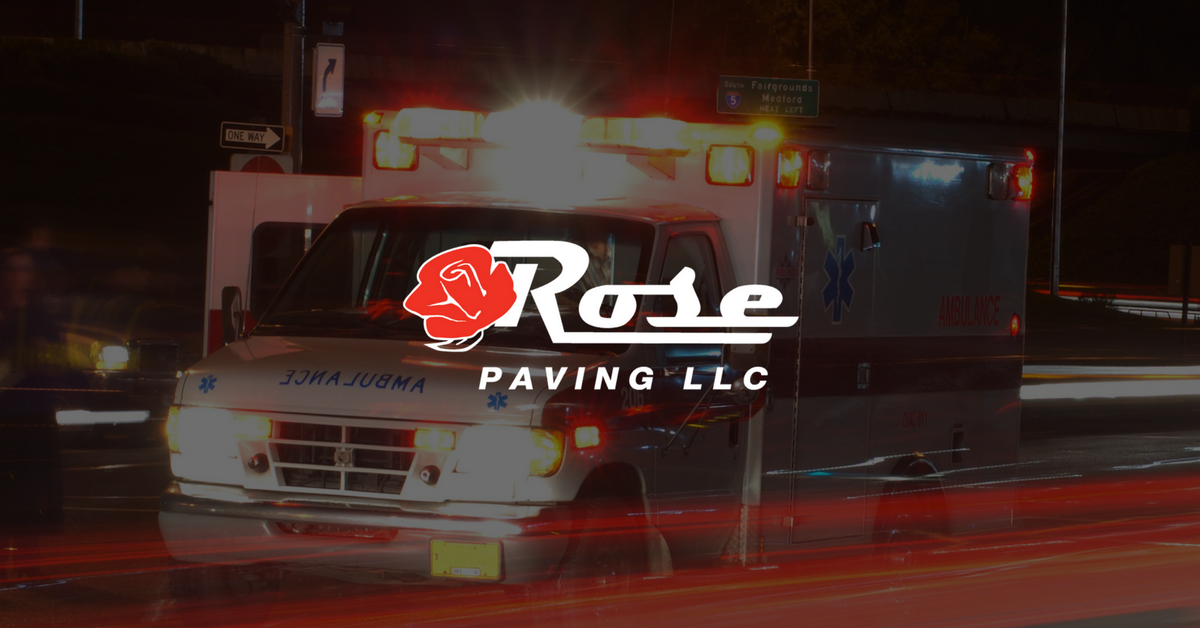Managing a Parking Lot for Healthcare Buildings
Updated on 7/12/2024
4 Things to Know About Managing Paving Projects at Healthcare Buildings
Accommodating the needs and priorities of our clients is paramount to every Rose Paving project, but for our clients in the healthcare industry, the stakes are especially high. Parking lots at hospitals and healthcare buildings must be easily accessible and simple to navigate, and any repair or repaving work must be completed without interrupting operations. Rose Paving has over 50 years of experience helping hospitals and medical centers across the country manage the maintenance and repair of their parking lots. Here are the best practices we’ve learned along the way.
1. Avoid Interruptions
No client wants their paving work to interfere with their ability to conduct business, but at hospitals, interrupting operations and patient access is not an option. Not all healthcare facilities are open 24/7, so with those clients, we work in off-hours, as quickly as possible, often with an expanded team to ensure we maximize our time while the lot is not in use. For the many medical buildings that never close their doors, repairs and repaving must be executed strategically in stages. Alternative access to the building must be established before any sections are blocked off, and if needed, temporary infrastructure like ramps and reroutes should be constructed first.
2. Prioritize Ease of Use
All clients have unique needs, and even among healthcare clients, no two project plans are alike. But one factor that must be considered in every medical facility’s paving project is designing a parking lot that is clearly marked, easy to maneuver, and intuitive to navigate. Remember that visitors using these parking lots are more likely to have mobility issues, and for many, the process of pulling up to the hospital is fraught with stress and anxiety. Going the extra mile with bright, clear, and easy-to-read marking and signage makes a difference.
3. Exceed ADA Standards
At Rose Paving, we are hypervigilant about making sure we’re up to date on ADA standards and every project we touch is compliant. But with healthcare clients, the accommodations they need can far exceed the minimum accessibility standards required by law. Not only do we meet any special requests made by our clients, but we also work ahead to identify and pitch additional opportunities to enhance accessibility with thoughtful redesign.
4. Maximize Preventative Maintenance
Because hospitals can’t afford to close their doors, we always recommend the most comprehensive preventative treatments to our healthcare clients. Our goal is to avoid major construction projects and to focus on extending the life of your pavement through ongoing maintenance that works around your busiest hours. And as with all our clients, we won’t consider the job finished until we hand over a long-term Portfolio Management Plan (PMP) that anticipates all future upkeep needs.
Managing Paving at Healthcare Buildings: Additional Considerations
Managing paving at healthcare buildings requires a deep understanding of the unique demands and constraints these facilities face. Beyond the general best practices mentioned above, there are several additional considerations that can significantly impact the success of paving projects in healthcare environments.
Emergency Access
One of the most critical aspects of managing paving at healthcare buildings is ensuring that emergency access is never compromised. Emergency vehicles, such as ambulances, must have unimpeded access to the emergency department at all times. This requires careful planning and coordination with hospital staff to ensure that any paving work does not obstruct or delay emergency services. Temporary routes and clearly marked detours must be established and communicated effectively to all staff and patients.
Infection Control
In healthcare settings, infection control is paramount. Paving projects can generate dust and debris, which can pose a risk to patients with compromised immune systems. To mitigate this risk, it is essential to implement stringent dust control measures, such as wetting down surfaces, using barriers, and employing specialized equipment designed to minimize dust generation. Additionally, scheduling work during low-traffic times can further reduce the risk of contamination.
Noise Control
Noise can be a significant issue in healthcare settings, where a quiet environment is often necessary for patient recovery and comfort. Managing paving at healthcare buildings requires using noise-reducing techniques and equipment. Communicating with hospital administration to identify sensitive areas, such as patient rooms and operating theaters, allows for better planning and execution of paving activities to minimize disruption.
Sustainable Practices
Sustainability is an increasingly important consideration in all construction projects, including paving. For healthcare facilities, implementing environmentally friendly practices can enhance the facility’s reputation and contribute to community health. Rose Paving incorporates sustainable materials and practices, such as using recycled asphalt, reducing waste, and implementing energy-efficient processes. These practices benefit the environment and can result in cost savings for the healthcare facility in the long run.
Patient and Staff Communication
Effective communication with patients and staff is crucial when managing paving projects at healthcare buildings. Clear and timely communication about project timelines, alternative parking arrangements, and any potential disruptions can alleviate stress and confusion. Signage, email notifications, and coordination with hospital administration can ensure that everyone is informed and prepared for any changes during the paving process.
Rose Paving Can Help
At Rose Paving, we’re honored to have the chance to help support organizations that do so much to take care of so many. We’re proud to have more than five decades of experience serving the needs of hospitals and healthcare facilities. For more information on how we can assist with managing paving at healthcare buildings, visit the “Healthcare” page on our website to learn more about our strategic approach to meeting the needs of our healthcare clients. Contact us today to discuss your next project and see how we can help you maintain a safe, accessible, and efficient parking lot.





